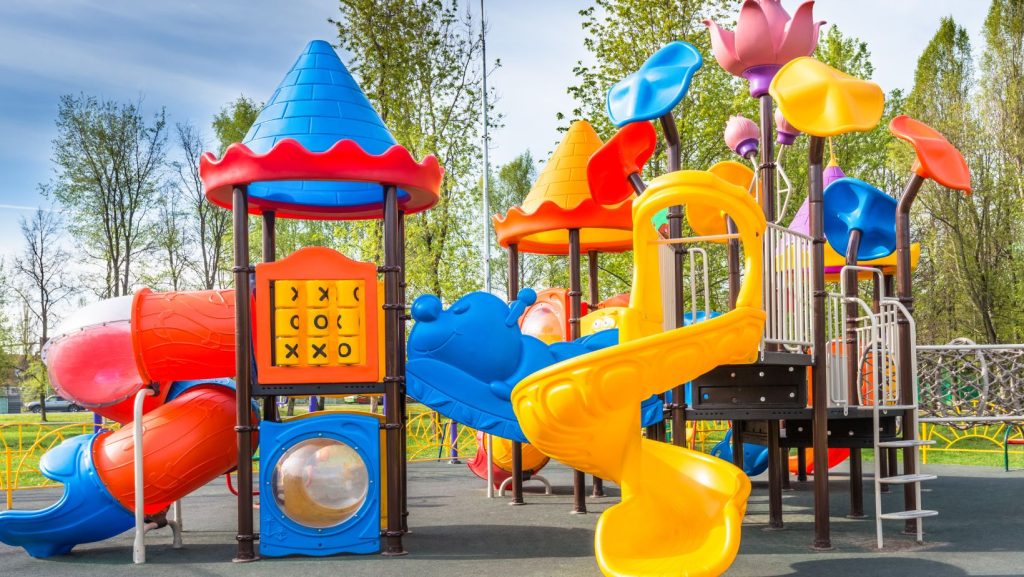
Outdoor playgrounds are more than just fun-filled spaces where children can spend their energy; they are crucial environments that contribute to a child’s physical, social, and cognitive development. Crafting a playground that can endure the test of time and meet the needs of generations requires careful planning and consideration. This blog post will provide eight essential tips to help you create a playground that not only captivates young hearts but also remains relevant and safe for years to come.
#1. Safety First
Safety should be paramount when designing an outdoor playground. Adherence to safety guidelines and standards is not only a requirement but the first step toward creating a playground that can withstand constant use. Opt for equipment that aligns with safety regulations, helping to prevent accidents and injuries. Prioritize surfaces beneath play structures that are known for their impact-absorbing properties, like rubber mats or wood chips, to reduce the risk of harm from potential falls. Additionally, keep in mind the need for visibility throughout the playground; the layout should allow parents and caregivers to easily monitor their children.
#2. Durable Materials
The choice of materials for your playground has a significant impact on its durability. Opt for high-quality materials that can endure the rigours of weather conditions and continuous use. High-density plastics, for instance, are known for their resilience and longevity. These materials are not only resistant to heat, cold, and moisture, but they also withstand the constant stress of children at play. By choosing such durable materials, you ensure that the playground maintains its structural integrity and aesthetic appeal over time, providing a safe and engaging space for children for a long period.
#3. Age-Appropriate Design
Designing a playground that caters to various age groups is a crucial consideration. Each age group has unique developmental needs and abilities; hence, the play equipment should be appropriate and safe for them. For instance, toddlers require smaller, lower structures with soft surfaces, while older kids can handle more complex structures that challenge their physical and cognitive skills. To ensure all children can enjoy the playground safely, consider segregating the play areas according to age. This not only ensures the appropriateness of the equipment but also minimizes the possibility of accidents between children of varying ages and abilities.
#4. Inclusive Design
Creating a playground accessible to all children, regardless of their abilities, is not just an ethical choice but also enriches the play environment. Incorporate features such as ramps for those using wheelchairs and transfer stations for children who need assistance transitioning from mobility devices to playground equipment. Equip the playground with sensory-rich elements – visual, auditory, and tactile – to cater to children with sensory processing disorders or autism. This inclusive approach ensures that every child, irrespective of their physical or cognitive abilities, can enjoy the playground, engage with their peers, and develop valuable skills.
#5. Shade and Shelter
An outdoor playground should be a place that children can enjoy, rain or shine. By incorporating shade structures and shelters, children are protected from excessive sun exposure and unfavourable weather conditions. Consider adding canopy trees, pergolas, or shade sails to help block harmful UV rays during peak sunlight hours. In addition to sun protection, these structures can also provide shelter during sudden rain showers, allowing for extended playtime. Furthermore, shaded areas offer a more comfortable environment for parents or caregivers who are supervising, making the playground a more inviting place for everyone.
#6. Low Maintenance Features
When selecting play equipment and features for your playground, it’s important to consider long-term maintenance needs. Materials that resist wear and tear, such as metal structures and high-density plastics, can dramatically reduce the need for regular repairs. Additionally, consider implementing features that naturally resist degradation, like UV-resistant plastics. The goal is to have a playground that, once installed, continues to provide a safe and engaging environment with minimal upkeep. This not only ensures the playground remains in optimal condition for longer but also significantly reduces long-term maintenance costs, making it a wise investment.
#7. Flexible Design
Flexibility in design is a key aspect of creating an outdoor playground that stands the test of time. While the current layout and equipment may be suitable for today’s needs, it’s essential to anticipate future requirements, changes in play trends, and evolving safety standards. A flexible design allows for easy modification or expansion, ensuring the playground remains relevant and engaging for many years. This could include leaving sufficient space for new equipment or features, using modular play structures that can be rearranged or updated, or incorporating elements that can be adjusted for varying levels of difficulty. By planning ahead for change, you ensure that your playground continues to inspire and delight generations of children.
#8. Community Engagement
Involving the local community in the playground design process is a crucial step toward creating a space that truly understands the needs and preferences of its users. Seek their input on everything from the type of equipment to the layout and colours. This not only fosters a sense of ownership among the community members but also ensures that the playground is well-utilized and loved. Moreover, these collaborations can often lead to innovative design ideas that professionals might overlook. Thus, creating a space that effectively promotes physical activity, social interaction, and fun for all its users.
By incorporating these tips into the design and planning process, you can create playgrounds that not only meet safety standards but also stand the test of time in terms of durability, inclusivity, and community satisfaction. A well-designed playground is an investment in the physical and mental health of our children, making it a crucial consideration for any community or institution.
At SPI Plastics, we can help you create an outdoor playground that ticks all the boxes. Our high-quality playground equipment, coupled with our professional design services, ensures that you have a safe and engaging space for children to learn, play, and grow. Contact us today to start creating your dream playground!